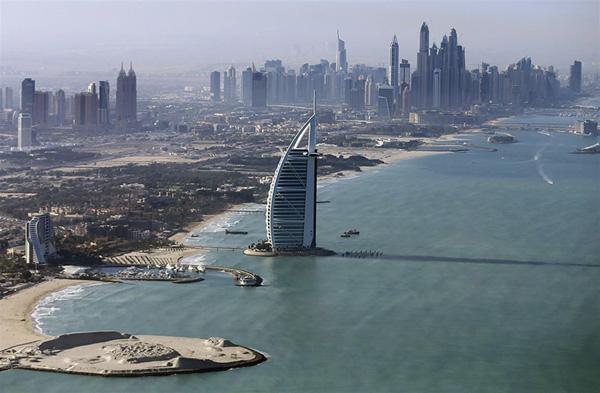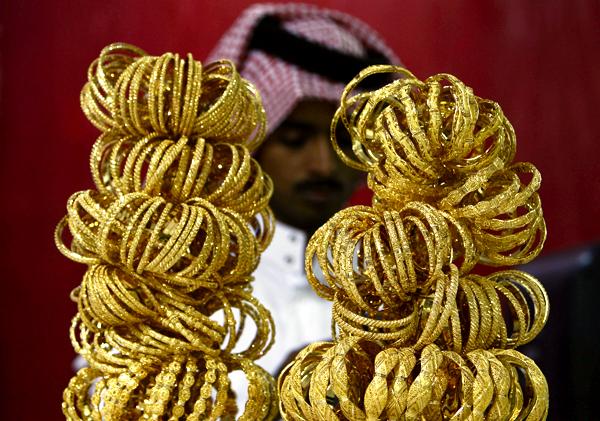You are here
Fitch cuts Saudi Arabia’s credit rating over oil price fall
By Agencies - Apr 12,2016 - Last updated at Apr 12,2016
RIYADH — Fitch Ratings on Tuesday lowered Saudi Arabia's long-term credit rating, saying the plunge in oil prices had "major negative implications" for the world's biggest crude exporter.
The agency also noted increased tensions with long-time rival Iran and greater uncertainty over economic policy, now overseen by Deputy Crown Prince Mohammed Bin Salman.
Fitch downgraded the kingdom's credit rating to AA- from AA, which still denotes expectations of very low default risk.
The outlook remains negative, indicating a further cut is likely.
Fitch said it had revised downwards its oil price assumptions for this year and next, to $35 and $45 a barrel, which "has major negative implications for Saudi Arabia's fiscal and external balances".
In February, another agency, Standard and Poor's, cut the kingdom's credit rating by two notches, to A-, citing the impact of lower oil prices on the kingdom's finances.
Last month, Moody's placed Saudi Arabia and other Gulf oil producers on review for downgrades.
Oil prices have collapsed from above $100 in early 2014, and on Tuesday traded at just over $40.
The government has said oil income made up 73 per cent of revenue in 2015, compared with an average of 90 per cent in the previous decade.
The kingdom reported a record budget deficit of $98 billion last year and projects a shortfall of $87 billion in 2016.
To cope with the gap, it raised retail fuel prices by up to 80 per cent in December and cut subsidies to electricity, water and other services.
It has also delayed some major projects under King Salman, who acceded to the throne last year.
King Salman named his son Prince Mohammed to posts including defence minister and head of the Council of Economic and Development Affairs.
"Control over economic policy making has been concentrated in the hands of Prince Mohammed," Fitch said. "This may have contributed to an acceleration of the economic policymaking process, but has also reduced the predictability of decision-making."
The agency also noted that Saudi Arabia faces high geopolitical risks relative to AA-rated peers.
"Tensions have risen between Saudi Arabia and its long-standing regional rival Iran, and are expected to persist, although a direct confrontation is highly unlikely. Saudi Arabia's military intervention in Yemen and in Syria shows a greater assertiveness in foreign policy," it added.
Separately, a report indicated this week that the oil-rich Gulf states are expected to borrow between $285 billion and $390 billion through 2020 to finance budget deficits resulting from low oil price.
The six Gulf Cooperation Council (GCC) states, which heavily rely on oil earnings, are expected to post a shortfall of $318 billion in 2015 and 2016, Kuwait Financial Centre (Markaz) said in a report.
The GCC groups Bahrain, Kuwait, Oman, Qatar, Saudi Arabia and United Arab Emirates.
Their public finances have been hit hard since oil prices shed more than two thirds of their value since mid-2014.
Oil income made up over 80 per cent of public revenues in GCC states before the price decline.
Markaz said GCC states will finance their deficits partly through borrowing and the rest by tapping their huge fiscal reserves.
OPEC kingpin Saudi Arabia last year borrowed $26 billion from local banks and used over $100 billion of its reserves that stood at $732 billion at the end of 2014, the report added.
With the exception of Oman and Bahrain, GCC states have huge fiscal reserves and a low level of public debt allowing them to raise large volumes of domestic and international debt, the report said.
The GCC states posted a combined deficit of $160 billion last year compared to a surplus of $220 billion in 2012.
In an earlier report in February, Markaz expected GCC public debt to rise to 59 per cent of gross domestic product in five years, from 30 per cent at the end of 2015.
According to sources familiar with financing, Saudi Arabia is seeking a bank loan of between $6 billion and $8 billion, in what would be the first significant foreign borrowing by the kingdom's government for over a decade.
Riyadh has asked lenders to submit proposals to extend it a five-year US dollar loan of that size, with an option to increase it, the sources said, to help plug a record budget deficit caused by low oil prices.
The sources declined to be named because the matter is not public. Calls to the Saudi finance ministry and central bank seeking comment were not answered.
Reuters reported that Saudi Arabia had asked banks to discuss the idea of an international loan, but details such as the size and lifespan were not specified.
The kingdom's budget deficit reached nearly $100 billion last year. The government is currently bridging the gap by drawing down its massive store of foreign assets and issuing domestic bonds. But the assets will only last a few more years at their current rate of decline, while the bond issues have started to strain liquidity in the banking system.
London-based boutique advisory firm Verus Partners, set up by former Citigroup bankers Mark Aplin and Andrew Elliot, is advising the Saudi government on the loan, the sources added.
The firm has sent requests for proposals to a small group of banks on behalf of the Saudi ministry of finance, the sources continued. They noted that banks participating in the loan would have a better chance of being chosen to arrange an international bond issue that Saudi Arabia may conduct as soon as this year.
A spokesman for Verus Partners was not immediately available to comment.
Rating cut
Analysts say sovereign borrowing by the six wealthy Gulf Arab oil exporters could total $20 billion or more in 2016, a big shift from years past, when the region had a surfeit of funds and was lending to the rest of the world.
All of the six states have either launched borrowing programmes in response to low oil prices or are laying plans to do so. With money becoming scarcer at home, Gulf companies are also expected to borrow more from abroad.
Bankers said a sovereign loan from Saudi Arabia could attract considerable demand, given the kingdom's wealth; its net foreign assets still total nearly $600 billion, while its public debt levels are among the world's lowest.
The pricing of the loan is likely to be benchmarked against international loans taken out by the governments of Qatar and Oman in the last few months, according to bankers.
Because of banks' concern about the Gulf region's ability to cope with an era of cheap oil, those two loans took considerable time to arrange and the pricing was raised during that period.
Oman's $1 billion loan was ultimately priced at 120 basis points over the London Inter Bank Offered Rate (LIBOR), while Qatar's $5.5 billion loan was priced at 110 basis points over, with both concluded in January.
"The indications are that a Saudi deal would have to price higher than that, as the world has changed significantly since those deals," one Middle East-based banker said, referring to the rating agencies' actions.
Related Articles
Kuwait City — The earnings of Gulf-listed firms dropped 8 per cent in the first half of 2016 due to low oil prices and a lack of liquidity,
DUBAI — A projected long-term drop in oil prices will drive fiscal reforms in energy-dependent Gulf states and spur public borrowing, Moody'
DUBAI — Saudi Arabia's financial markets barely blinked on Thursday after its debt was downgraded, a sign that a charm offensive by Saudi ec

















